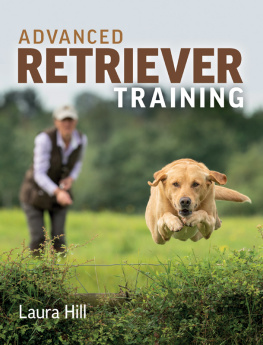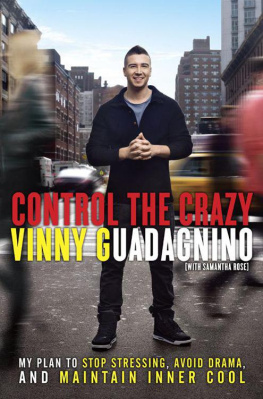Fired Up, Frantic, andFreaked Out
Training Crazy Dogs from Over the Top to Under Control
Laura VanArendonk Baugh CPDT-KAKPACTP

Copyright 2013 Laura VanArendonk Baugh
Cover design by Laura VanArendonk Baugh and Alena Van Arendonk
Author portrait by Elemental Photography
Technical editing by Casey Lomonaco
Interior photos pages 25, 67, 77 by Alena Van Arendonk
Cover photos and interior photos pages 13, 47, 59, 91, 99, 117, 123, 133 byFotolia
Interior photos pages iv, 109, 147 by Laura VanArendonk Baugh
ISBN 978-0-9859349-3-4

www.Aeclipse-Press.com
All rightsreserved. No part of this publication may be reproduced, distributed, ortransmitted in any form or by any means, including copying, recording, or otherelectronic or mechanical methods, without the prior written permission of thepublisher, except in the case of brief quotations embodied in critical reviewsand certain other non-commercial uses permitted by copyright law.
All servicemarks, product names, and trademarks belong to their respective owners.
Although everyeffort has been made to ensure the information in this book was correct andbest practice at press time, the author and publisher do not assume and herebydisclaim any liability to any party for any loss, damage, or disruption causedby errors or omissions, whether such errors or omissions result fromnegligence, accident, or any other cause. Especially with aggression oranxiety, please consult a qualified professional.

Chaucer was the first dog I ever clicked. Without herbrilliance, I might not have gone further.
1999-2003
About this book
A number of people have been asking when I was going towrite a book. I dont have to, was my usual answer. There are so many goodtraining books out there already.
But gradually I began to realize several things:
 I see alot of referrals for dogs which are basically over-aroused for one reason oranother aggression, fear, fear-aggression, joy, or just plainover-stimulated.
I see alot of referrals for dogs which are basically over-aroused for one reason oranother aggression, fear, fear-aggression, joy, or just plainover-stimulated.
 I wasspending a good two-thirds or more of my training career using a very similarprotocol with all these dogs, with success.
I wasspending a good two-thirds or more of my training career using a very similarprotocol with all these dogs, with success.
 Manyclients would have benefitted from a more-detailed follow-along guide.
Manyclients would have benefitted from a more-detailed follow-along guide.
As it turns out, I know a fair bit about arousal in dogs,not in little part due to my excellent instructor Laevatein, a hair-trigger Dobermanbitch who had to learn stationary behaviors in mere eighths of a second. Itwould be good to share what she has taught me.
While I absolutely love discussing the science of behaviorwith other nerds, this book is intended primarily as a guideline for practicalapplication, a sort of follow-along-at-home resource, and any sort of academicdiscussion only secondarily. I will use scientific terms properly, but Ill usea number of other terms for easy layman reference or explanation.
Acknowledgements
I most certainly did not come up with all this myself; theproverbial giants on whose shoulders this dwarf stands form a long linestretching back through Karen Pryor, Bob Bailey & Marian Breland Bailey,B.F. Skinner, Premack, Pavlov. More recently we have many brilliant trainerswhom I am both pleased to know and honored to call colleagues, who have broughtout new research and applications. I darent try to list them all, lest I missone!
Many, though, you will find mentioned here. And sometimes abrilliant mind and a semi-gloss mind might discover an idea at the same time,working at similar concepts in parallel tracks. I once learned the inimitableHelix Fairweather and I were, on opposite sides of the country, both using the phraseget out of Dodge for very similar management techniques, though we had neverdiscussed it. And what I do with matwork is very like what Leslie McDevittrecommends in her hugely helpful book Control Unleashed. No usurpationof ideas in intended!
While talking with clients I often find myself quoting KathySdao, or I may use a catch-phrase popularized by Alexandra Kurland. I thinkits imperative to give credit where credit is due, and I will try to citethese influences where appropriate.
And I owe an enormous thanks to Casey Lomonaco, who editedthis with an eye to both science and accessibility. Youre fabulous.
Table of Contents
.
Chapter 1 Help, My Dog Is Crazy!

Laev is eager forher turn!
So, your dog is nuts.
Well, not nuts, really. Just, well, over the top. Incertain situations. But hes a really good dog normally.
Or someone has said hes troubled in some way, fearful orreactive or hyper or generally not always coping with his environment. Is this programfor you?
What Is an Agitated Dog, Anyway?
Good question!
An agitated dog is any dog so caught up in his emotions orinnate responses that he cannot think rationally, respond to cues, or controlhis reactions. There are many examples regularly seen on our sidewalks, homes,parks, and dog sport venues:
 A dogbarks excitedly at the front door, so eager to greet his visiting friends thathe doesnt respond to his owner trying to get him to sit or move back from thedoor.
A dogbarks excitedly at the front door, so eager to greet his visiting friends thathe doesnt respond to his owner trying to get him to sit or move back from thedoor.
 A dogbarks worriedly at the front door, ignoring his owners reassurances. Hedoesnt quiet or relax, moving alternately toward and away from the door inconflict.
A dogbarks worriedly at the front door, ignoring his owners reassurances. Hedoesnt quiet or relax, moving alternately toward and away from the door inconflict.
 A dog isso stimulated by his favorite sport agility, protection, lure coursing, etc. that he misses important cues or cant control himself, resulting in brokenstart line stays, poor or incorrect responses, etc.
A dog isso stimulated by his favorite sport agility, protection, lure coursing, etc. that he misses important cues or cant control himself, resulting in brokenstart line stays, poor or incorrect responses, etc.
On the surface, these look like very different issues thedog is distracted, the dog is afraid, the dog is excited. But fundamentally,the dog is in a limbic, reactive state of mind instead of being in a cognitive,proactive state of mind, and that means he cant sometimes physically cant respond to known cues.
Changing Behavior to Change Emotion
So it appears we have to change the dogs emotions, yes? Thereare a number of training protocols out there to do just that, based on desensitizationand classical counter-conditioning. But while these do work, theytypically take much longer than we are often willing or able to grant.
Dr. Jess Rosales-Ruiz, Associate Professor in the Departmentof Behavior Analysis at the University of North Texas, points out beautifullythat we arent required to take this approach. Psychologists change emotionsto change behavior, which is great for the pharmaceutical industry.Behaviorists change the behavior to change the emotions.
One human example he offers is that of a child who hates orfears math. That child willonly change her opinion of math if she gains confidence in the skills (behaviors)necessary to succeed at it; no pep talk is going to make a real or permanent changein her view.
Next page













 I see alot of referrals for dogs which are basically over-aroused for one reason oranother aggression, fear, fear-aggression, joy, or just plainover-stimulated.
I see alot of referrals for dogs which are basically over-aroused for one reason oranother aggression, fear, fear-aggression, joy, or just plainover-stimulated.